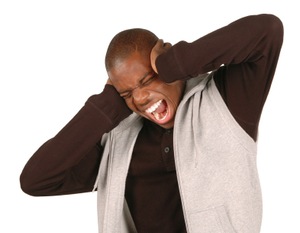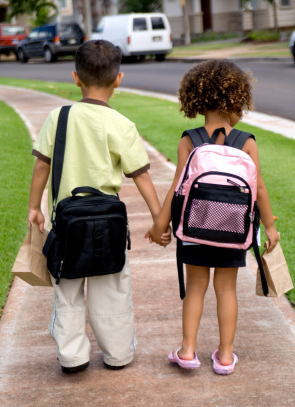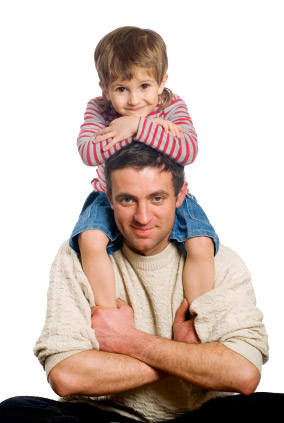 |
 |
According to the American
Chiropractic Association, fourteen percent of the patients who regularly visit
chiropractors go for relief from headaches. This is probably due to the fact
that while there are many medications traditional doctors might prescribe, chiropractors
treat headaches by getting to the cause of the problem, which helps the body to
correct it.

Chemical, physical, and emotional stressors don’t just trigger headaches, they
can also disrupt the delicate balance of your nervous system, and eventually
alter the proper positioning of your spinal column, leading to pain,
discomfort, and decreased mobility. When this happens, it may lead to a series
of subluxations (spinal misalignments). Untreated, subluxations can lead to
irreversible spinal degeneration. Chiropractic helps repair spinal misalignment
created by various stressors, regardless of the cause.
|
|
 |
 |
Backpacks are designed to distribute the weight of the contents across
your child’s strongest muscles. But if worn incorrectly, or when they are too
heavy, backpacks can cause problems for children and teenagers by injuring
muscles and/or joints. Over time, these minor injuries may lead to severe
back, neck, and shoulder pain, as well as posture problems. Prevention is key – follow these backpack guidelines: 
-
Look for backpacks with wide, cushioned shoulder straps, and make sure your
child wears their backpack straps on each shoulder with tightened straps, so
the pack stays close to the body.
-
Teach your child to pick up a heavy backpack with their legs and not their
back.
-
Pack light. If your child has a locker at school, encourage them to take
frequent trips to it throughout the day, to unload books they don't need.
-
Finally, tell your child to let you know if they experience neck, shoulder, or
back pain, so you can consult your chiropractor.
Shoes are another source of orthopedic support for your child. According to the
American Academy of Orthopedic Surgeons, properly fitted shoes are crucial for
your child's safety and comfort. Shoes that fit well will support your child's
mobility, stability, and safety. Shoes that are too wide, too narrow, too long,
or too short, on the other hand, may cause discomfort or injury. Before you
take your child back-to-school shoe shopping, there are some things you can do
to protect your child.
Measure each foot each time you purchase a new pair of shoes. Children's feet
are constantly growing. If the feet differ in size, choose the larger size. A
pad can be added to the shoe containing the smaller foot to make the shoe fit
better. Choose soft, pliable shoes with enough length in the toe for a little
growth and enough width for a little wiggle room. Shoot for a snug fit at the
heel and in-step with enough depth that your child's toes don't push down toward
the point of the shoe.
Remember that a healthy child is a happy one, and your kids will have plenty of
choices for the kinds of backpacks and shoes that are healthy for them, without back-to-school shopping being a drag!
|
|
 |
 |
When
your spine isn't growing healthily it's doing the opposite, which is
called spinal degeneration. As your spine degenerates, the bones of
your spine deform, your discs swell and then shrink, and your
ligaments, tendons, and muscles begin to harden and weaken. Your entire
spinal column may lose its balance, flexibility, stability, and strength.
During the process of spinal degeneration, your nerves, body chemistry,
and internal organs may also be affected, making it more difficult to
adapt to the everyday physical demands of life. strength.
During the process of spinal degeneration, your nerves, body chemistry,
and internal organs may also be affected, making it more difficult to
adapt to the everyday physical demands of life.
But
thanks to chiropractic care, you don't have to sit and passively watch
as your spine degenerates. Chiropractic medicine improves the overall
health of the spine, including
spinal balance and posture, and it keeps your joints, discs, and nerves
healthy and strong. It can slow (and sometimes even reverse) the
process of spinal degeneration and restore motion, helping your body
transition back to normal functioning. If it's identified in time, the
spinal degeneration may begin reversing itself.
Naturally, the
best approach to treating spinal degeneration is to prevent it from
occurring in the first place. The pressure of stress, modern life, and
one’s environment can really take a toll on us over time;
therefore, schedule periodic spinal checkups with your
chiropractor to help detect vertebral decay before the degeneration
process begins. In addition to the routine checkups, see your
chiropractor after any accident, fall, or other trauma that may
compromise the health of your spine.
|
|
 |
|
|
|
 |
|
In This Issue
|
|
 |
|
Contact Information
|
Your Name

Phone
Website
|

|
|
Smoking and the Musculoskeletal System
|
According to the American Academy of Orthopedic Surgeons, smoking can have the following effects on the musculoskeletal system:
-- Increased risk of osteoporosis.
-- Reduced bone density.
-- Impeded blood supply to bones, causing bone cells to form more slowly.
-- Impaired calcium absorption.
-- Lowered effectiveness of estrogen therapy.
-- Raised risk of hip fracture.
-- Heightened chance of rotator cuff injuries.
-- Contributing factor of low back pain and rheumatoid arthritis.
-- Prolonged healing time after bone fractures.
|

|
|
Why You Need Vitamin D
|
Muscle and bone are
significantly affected by the presence (or absence) of vitamin D. In bones,
vitamin D stimulates cell turnover while protecting osteoblasts (bone cells)
from dying via apoptosis, or programmed cell death. In muscles, vitamin D
maintains the function of type II fibers, preserving muscle strength and
preventing falls.
More than 25 million adults in the United States have or are at risk of
developing osteoporosis, a disease characterized by fragile bones that
significantly increases the risk of bone fractures. The leading cause of
osteoporosis is inadequate calcium intake, but insufficient vitamin D is a
major contributor, as vitamin D is vital to the body’s ability to absorb
calcium.
An adequate amount of vitamin D helps maintain bone strength, which aids the prevention
of osteoporosis in older adults, non-ambulatory people, people who are unable
to exercise, postmenopausal women, and individuals on prolonged steroid
therapy.
|

|
|
Healthy Afterschool Snack: Apple Raisin Ladybugs
|

Ingredients:
2 lettuce or kale leaves
1 medium red delicious apple, quartered
2 teaspoons creamy peanut butter
2 tablespoons raisins
5 seedless red grapes
Directions:
Place lettuce leaves on two salad plates. Arrange two apple quarters, peel side
up, on the lettuce. Use dabs of peanut butter to place raisins in the space
between apple quarters. Place one grape at the stem end of apple for head. For
legs, cut the remaining grapes lengthwise into four pieces and place three on
each side of ladybugs. Place small dabs of peanut butter on remaining raisins;
gently press onto apples for spots. Yield: 2 servings.
|
|
 |
